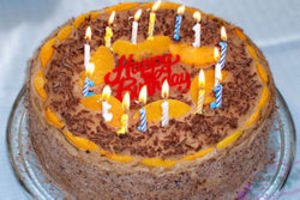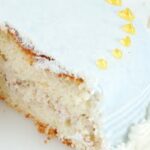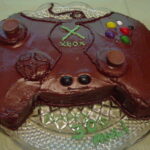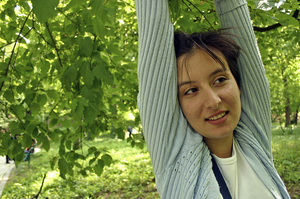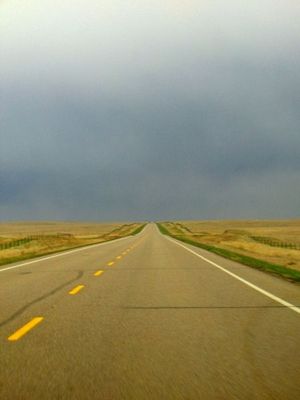For many, the wonderful world of French pastries is a delightful, nonetheless complex world, of delectable, overtly beautiful, ethereal foodstuffs. A peek through a French patisserie’s shop window is a profound revelation of intricately created, richly flavored treats that only French patissiers could ever dream up. There are colorful platters of delicate French macaroons, one stacked up against the other, rich rounds of gâteaux, and beautifully decorated financiers and tartines. Most of us common folk are content to simply watch, admire and occasionally enjoy, leaving the making of these tiny complexities to reputable kitchen gods. Yet there’s the occasional brave soul who dares venture into the treacherous grounds of French pastry making, nobly attempting to unveil the secrets of the craft and prove to the world that there’s nothing more to these goodies than a bit of flour, sugar, butter, and eggs-plus the occasional chocolate, of course!
That is exactly what Bruce Healy and Paul Bugat attempt to do in The Art of the Cake: Modern French Baking and Decorating. It’s quite a weighty tome, with an elaborate collection of more than a hundred different recipes from Bruce’s collection and some of Paul’s favorites from his bakeshop in France. Unlike most other baking and cake books which are written by professional pastry chefs, Healy is your average, run of the mill American-a retired physics professor actually (so there’s nothing too ordinary about him, either)-who is a baking hobbyist. It’s quite a refreshing perspective to write from, actually, since when he tells you a method is not difficult at all, you’ll find him easier to believe, and it’s all the more comforting to know that he’s not some chap who cut his teeth and honed his culinary skills to perfection in some legendary chef’s kitchen.
In the book, there is an elaborate chapter on basic baking methods, techniques and tips, coupled with some very useful illustrations for a step-by-step guide. The authors discuss commonly overlooked details when it comes to basic baking principles, even including how to flour your cake pans properly or how to level cakes nicely. They run you through the particulars of frosting cakes and even how to mount your cake rounds. They discuss the different general classes of French pastries, into which the recipes of the book are classified: simple cakes, round sponge cake gateaux, round nut meringue gateaux, meringues, rectangular gateaux, Bavarians, charlottes and mousse cakes, and logs and loaves. Each recipe is introduced with a simple anecdote or piece of trivia and ingredients are given in both volume and metric measurements, which is a huge convenience for American bakers. Each section starts off with base recipes for the section, and the authors give you other tips and suggestions on how to incorporate these base recipes into other desserts. The other recipes in each section all build up around the basic recipe, introducing different flavor combinations, added textures and fancy decorating ideas.
The second section of the book is allotted for basic components applicable for multiple recipes throughout the book, or even base recipes that you can incorporate into any other recipe you can dream up of. The authors walk us through recipes for common fillings and frostings (chocolate sauce, buttercreams and glazes), show us some neat finishing touches for cakes and guides us through basic preparations, which are items called for in most French pastry recipes. They explain in detail how to roast hazelnuts, for example, or make clarified or browned butter, and how to make your own almond flour at home. You can’t ask for a more detailed book that covers the basics with such patience and precision.
The book only covers French cakes though, and if you’re looking for recipes for tarts, custards, cookies, ice creams, petit fours, or breads, you won’t find them here. There are quite a few photos, too, of select cakes in the book; it would certainly have been more attractive had it had more pictures to boast. I’ve tried a few recipes, and they aren’t really fantastic, out of this world material, but they stand fairly well among regular French pastries. The real gem in this book is the amount of care and detail the authors have taken in explaining the techniques and concepts of the world of French pastries to readers, especially beginners. It’s like taking you by the hand and walking you through a step-by-step introductory course on baking. The recipes are also scaled perfectly for the home baker. This book certainly holds a treasure trove of information, and I would highly recommend it to French pastry enthusiasts. Beware though, French cakes have nothing much in common with American cakes. No chiffon cakes or angel cakes here. Accomplishing French cakes is quite a task that requires meticulous precision, lots of patience and some practice. Read: none of the recipes include the use of baking soda or baking powder as leavening agents. French cakes are far more delicate, and they’re certainly not the types you’d find in regular pastry shops. It took me quite a few tries to perfect some of the recipes here, and they must be carried out with absolute precision and a meticulous eye. The recipes featured in this book are French in every sense of the word, and these are no regular cakes. They’re beauties, that with a little practice and hard work, are masterpieces that will do you proud.


